Things are getting real interesting out there on the iPhone front, in so many ways. Here’s a case in point: this fastest-ever growing mobile phone platform, as originally introduced last year, did not support Flash (and still doesn’t), but it’s clear that Adobe, the company behind Flash, would sure like to…uh…do something about that? 
Perhaps you saw the news that broke last week related to this. Here are the two items I caught:
• iPhone Still Not Ready for Flash (from CMP’s funky, new Contentinople site)
• Who Needs Flash on iPhone More, Adobe or Apple? (from the great blog "last100," part of the ReadWriteWeb network)
After reading these, I decided to ask a couple of my smart local buddies to do guest posts. First, my longtime designer friend "PXLated" — who’s an almost-as-longtime Apple and Adobe user and follower. Get this, he goes this far back with Adobe technology (I love this story): when he first called ’em for support, John Warnock took the call. [Yeah, for you trivia buffs, that was the founder.] I asked PXLated what the heck was going on, and if he could give me his take over the weekend. His comments follow:
Adobe’s been pushing Apple to put Flash on the iPhone and is using the blogosphere to promote its cause ("we need Flash, we need Flash", blah, blah, blah). Adobe and their surrogates — you know, the old interactive CD developers whose businesses went tits-up when the web took off — try to play it that Flash is a web standard and, to have the full web on the iPhone, you need Flash.
First of all, it’s not a standard. It might be ubiquitous, but it’s not in any way, shape, or form a web standard. There are many things delivered over the Internet (the web, mail, etc), and Flash is interactive multimedia delivered over the internet. There happens to be a Flash plug-in that allows it to be played within a browser, but it’s not "standard" web technology.
So, Apple has basically said no, the full version of Flash is too resource-intensive and power hungry, and even taxes desktop machines. Load up some Flash sites (or several) and it can bring your browser to a screeching halt and max your CPU usage. I’ve seen it written that it’s even worse on Macs than on Windows, as Adobe has never optimized the Flash player for the Mac. Then there’s "Flash Lite," a version that’s on some phones. But, according to what I’ve read, and what Jobs has said, it is too lightweight, in that it won’t render Flash sites as we know them — only ads and simpler stuff like animations. And it won’t even display stuff created in the latest version of Flash.
So, currently, there isn’t a version of Flash that Apple will allow. The full version of Flash is too heavy, and Flash Lite is too light. Bottom line, there is no version appropriate for the iPhone/iPod Touch.
The current brouhaha is that Apple came out with their iPhone SDK, and Adobe’s current CEO said in a conference call last week that his firm would use that to develop Flash for the iPhone. The reality is they can’t without deeper ties to the underlying operating system, or to the Safari browser. That isn’t possible without Apple’s help and approval. It seems his engineers explained the facts of life to him, and a day later he corrected himself.
So, now Adobe is back to square one.
My guess is there’s a lot of politics going on behind the scene, and some of it is historical:
1) Adobe raped Jobs in licensing fees for using display postscript at NEXT.
2) They tried to do that again at Apple for OSX, and Jobs said screw you and developed the whole display technology using PDF. He could do this because Adobe had opened the specs so PDF could become a standard. Open=no licensing fees… 🙂
3) Adobe probably pissed Jobs off (as well as all Mac users) when they were one of the last software companies to release OSX versions of their programs, and used Carbon (a bridge) rather than Cocoa (the native method).
4) Adobe then again took forever to make their apps native for Intel, probably further straining their relationship with Jobs.So, basically, I would guess there is no love lost with Jobs when it comes to Adobe. Hey, they screwed with him when he was down.
The problems for Adobe are many. First, all their big apps (including Photoshop and Illustrator) are mature, and there just isn’t much they can add to them to make people upgrade. They locked themselves into a development box where they can’t utilize all the great underlying OS features to create a nice upgrade, either. So, their only place for real growth is to ride the next wave in computing — mobile — but they can’t if Flash isn’t as ubiquitous on phones as it is desktops. So, there are a bunch of choke points and pressures.
The iPhone points to the future and is a grand success, but Apple prefers to use and promote web standards — like Scalable Vector Graphics (SVG), Javascript (Ajax), and the latest in the HTML specs — rather than proprietary things like Flash. Microsoft is introducing a Flash competitor called Silverlight. So, Adobe is desperate because they know the mobile phone/browsing market is many times bigger than the desktop market. If they can’t get Flash to be as ubiquitous on mobile devices as it is on the desktop, the jig is up and they could miss out on the whole next generation of computing. And all those Flash developers will have to learn new skills.
It’s desperation time for the whole bunch, hence the latest outcry.
Thanks, PXLated. This will indeed be very interesting to watch! [Note: I guess I won’t go long on Adobe stock.]
Not being one to ever be satisfied, I then just had to ask yet another of our mutual smart friends for his opinion on the news. Steve Borsch has an excellent blog at Connecting the Dots, and also blogs with me occasionally at Minnov8. He’s very savvy in the ways of Apple and Adobe, having worked for Apple for several years in sales in the ’90s. And he’s as plugged in to where things are headed in the new world of "the Internet as platform" as anyone I know. Here are his comments:
Any of us in the tech sector knows that shrink-wrapped software is dead; the personal computer will be less and less necessary going forward; and that multiple device types connected to the Internet — with most of the processing being done "in the cloud" or at hosted facilities — will be the way most of us get our news, information, entertainment, and social connections going forward.
As the Internet increasingly morphs into the "platform" for applications — either Web, desktop, or the new category of rich internet applications (RIAs) — runtime "containers" will be critical for any company hoping to be relevant, and Apple’s name has come up as one of the most absent players in this space. Ironically, iTunes is often used as the best example of a rich internet application, since one can rip and manage music on the personal computer desktop; share it within the home; buy and download music, movies, and video "up in the cloud" along with cover art; and subscribe to free audio and video podcasts.
Adobe’s AIR (Adobe Integrated Runtime) is an RIA platform with incredible functionality and the capability to "collapse" many sorts of technologies into a "container" that runs in a Web browser or on a personal computer desktop. Microsoft’s Silverlight takes a different approach (and many design tools exist for creating and deploying Silverlight "containers"), but the essence is the same: next generation hybrid applications that attempt to marry the best of the desktop with the best of what’s delivered over the Internet from the cloud. In fact, buzz has it that Silverlight was a direct strategic response to the ubiquity of Flash (which is on something like 97% of all browsers), and that Microsoft’s abdicating the runtime of video, audio, and animation to Adobe was a very bad idea…especially if the company was interested in cloud computing (which it is now!).
My belief is that Apple isn’t going to sit this one out, and the Flash controversy is all about positioning their approach (whenever it’s revealed), since they have all the building blocks necessary: the most ubiquitous creative platform, called Macintosh; Quicktime (which I’d argue is the best video container); Safari on both Mac and Windows (built on the fast, completely Web-standard browser engine called "WebKit"); incredibly simple "clip" technologies like WebClip (a fast and easy way to clip a section of a web page, and it automagically turns into a widget); and the fastest growing mobile device (iPhone); and many, many rumors of upcoming device-types leveraging the critically acclaimed "touch" technology used in the iPhone interface.
Add to that Apple’s famed ability to deliver easy-to-use interfaces to historically difficult processes and technologies. Probably my best example is the phenomenally good-looking movies and, most specifically, DVDs that can be created with iMovie and iDVD. Having grown up in the interactive space with videodisc and CD-ROM, I can tell you that creating and delivering a DVD is so laughingly simple that one of my non-technical friends (who can barely figure out the radio in his car) has delivered some of the best-looking DVDs I’ve ever watched.
My prediction is that Apple will be delivering different "touch" form-factors in the next six months (along with faster 3G iPhones), as well as touch modifications to their notebook platforms. As user-generated content continues to explode — and demand accelerates for tools to create and deliver it — Apple will be right there with what’s needed to create and deliver at runtime.
There you have it, folks. What my smartest, tech-savviest friends say is behind all this Apple/Adobe posturing regarding Flash. In other words, there’s a whole lot more than meets the eye. And your intrepid reporters at Tech-Surf-Blog [wherever I can find them!] are out there for you, right in the middle of it all.
(For another take on Apple and its culture, check out this great cover story just published in Wired Magazine: Evil/Genius: How Apple Wins By Breaking All the Rules.)
Now, you need to tell me what *you* think about the future of Apple and the iPhone. Don’t be shy — comment below and show your stuff…

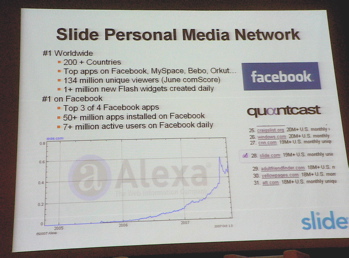
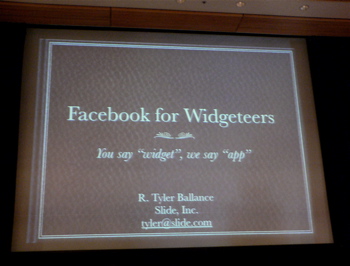


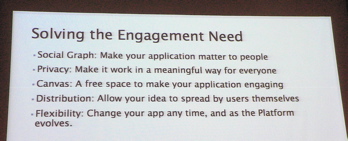
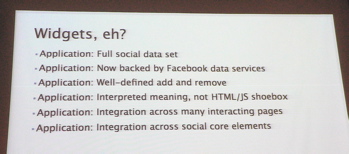
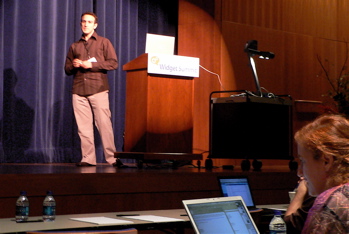


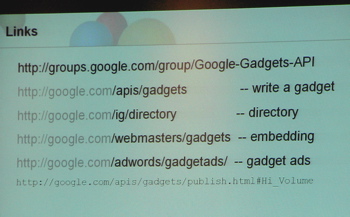



Recent Comments